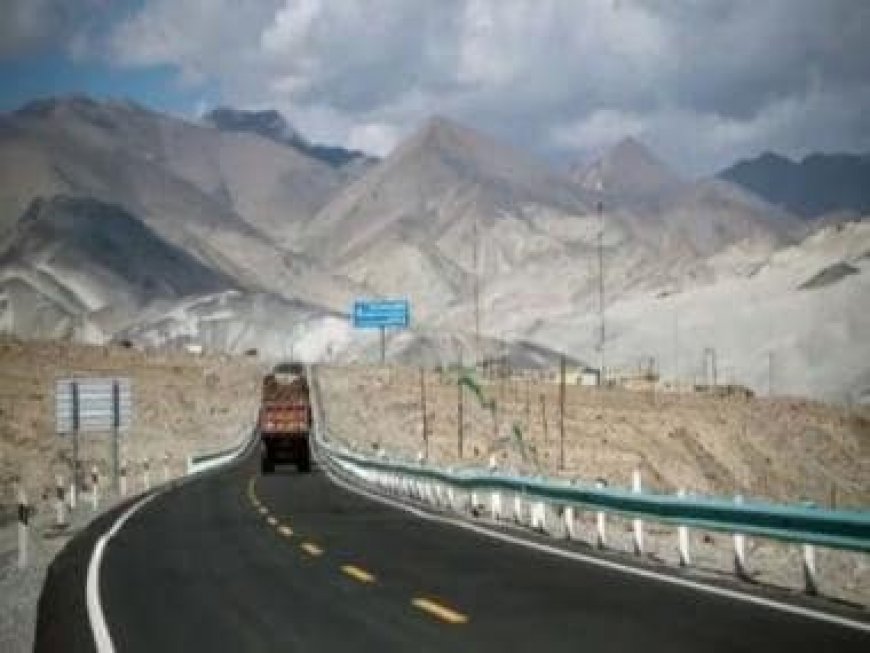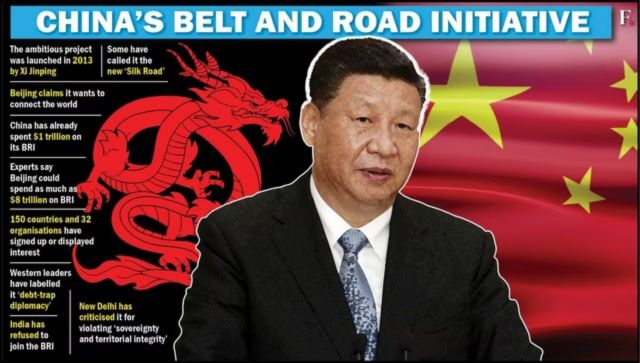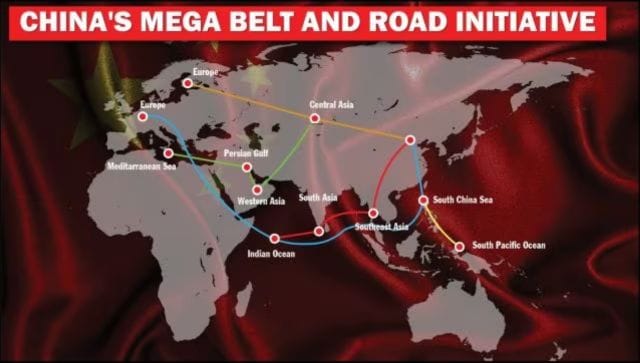10 years of China's Belt & Road project: South Asia barring India & Bhutan, in a bind over Beijing’s predatory tactics
10 years of China's Belt & Road project: South Asia barring India & Bhutan, in a bind over Beijing’s predatory tactics

This year marks the tenth anniversary of China’s ambitious Belt and Road Initiative (BRI), a $1.4 trillion project initiated by Xi Jinping with an aim to create a modern-day silk road, connecting Asia, Africa, and Europe.
However, the project is viewed with suspicion considering China’s desire for global dominance. These suspicions deepened when South Asian countries, who are signatories of the BRI, experienced economic difficulties due to China’s predatory tactics, famously known as “debt-trap” diplomacy.

Except for India and Bhutan, all South Asian countries are part of the BRI. Despite this, a closer look at their economic conditions shows that China’s BRI promises haven’t been fulfilled since the project started a decade ago.
To better understand this situation, we can examine China’s close allies, Nepal and Pakistan, both of which have significant ties to China. Pakistan joined the BRI in 2013, and even before that, there were discussions between Islamabad and Beijing about establishing an economic corridor.
In 2013, they announced the China-Pakistan Economic Corridor (CPEC), a multi-billion-dollar project that gained further momentum in 2015 when Xi Jinping visited Pakistan.
The main aim is to link Pakistan’s Gwadar port in the southwest with Kashgar in China’s Xinjiang Uyghur Autonomous Region, covering approximately 3,000 km. The project focuses on energy, transportation, and industrial cooperation.
The CPEC, considered a prominent project of the Belt and Road Initiative (BRI), was intended to transform Pakistan’s economy. It was launched at a critical time when Pakistan faced challenges like internal security crises due to increased terrorist attacks and economic issues such as declining foreign investments, macroeconomic instability, and electricity shortages.
However, since 2018, progress on the CPEC has slowed down due to these very reasons. Chinese investors in Pakistan became targets of militant attacks, prompting Chinese leaders to call for better security measures for their citizens in Pakistan.

Around $25.4 billion has been invested in various CPEC projects, including coal and hydel power projects, the orange line, and road infrastructure. However, it is believed that China’s lending to Pakistan is driven by its own strategic interests, and the details of the projects, such as investment terms, loans, and the full extent of the initiatives, remain somewhat unclear.
Currently, Islamabad is facing its worst economic crisis since its inception. A report published by the Associated Press in May 2023 revealed that approximately 50 percent of Islamabad’s foreign loans come from China, which is affecting essential services such as education, fuel, and electricity, as tax revenues are impacted.
According to the latest estimates, Pakistan’s external debt has exceeded $100 billion, with more than $30 billion, which is about one-third of the total external debt, owed to China.
The economic ties between China and Pakistan through the CPEC are mostly based on debt, with high interest rates ranging from 4.5 to 6 percent. This has added to the financial burden of Pakistan, which is already facing economic distress.
In May, the extension of the Belt and Road Initiative (BRI) to Afghanistan raised suspicions about China’s intentions in tapping the nation’s abundant resources, especially considering Afghanistan’s war-torn but resource-rich status. China agreed to extend the $62 billion CPEC to Kabul after the Taliban’s agreement to join.
Nepal became a signatory of the BRI in 2017, and currently, China is its largest creditor. Initially, Kathmandu agreed to 35 projects under the BRI, but in 2019, they requested a reduction to only nine projects. Nepal made it clear that they preferred grant or soft loans instead of high-interest loans with short repayment timelines.
Due to financial difficulties faced by Colombo (the capital of Sri Lanka), officials in Nepal became cautious about Chinese financing. Despite reaching agreements on various projects, no projects under the BRI have been implemented in Nepal since 2017.
For example, a new 150-km railway line connecting Kathmandu and Kerung in Southern Tibet was agreed upon in 2018, and in 2022, China pledged a $118 million grant for the Trans Himalayan Multidimensional Connectivity economic corridor, which was hailed as a way to transform Nepal from a land-locked to a land-linked country. However, these projects have not yet materialized.
Kathmandu has proposed only one project under the Belt and Road Initiative (BRI), which is the development of the Madan Bhandari University in 2019. However, none of the proposed projects have been implemented, even though the BRI agreement between Nepal and China was renewed for the second time in May of this year.
In 2022, a six-point agreement was signed by both countries to increase Nepal’s engagement and exchange information on governance, legislature, and supervisory practices.
At the beginning of this year, there was controversy and confusion in Kathmandu when China unilaterally claimed that the recently inaugurated Pokhara International Airport was a ‘flagship project’ of China-Nepal BRI cooperation. However, the Nepal Foreign Minister clarified that project implementation under the BRI is still under consideration, and not a single project has been implemented yet.
In reality, the airport was funded by a $215 million soft loan provided by China’s EXIM Bank in 2016, a year before Nepal became a signatory of the BRI.
Similarly, in June, the Chinese Ambassador to Nepal, Chen Song, wrote on Twitter that the inauguration of the WeChat Pay Cross-Border Payment Service would be a new step towards financial connectivity and one of the five aspects of cross-border linkage under the BRI. However, Kathmandu has repeatedly reiterated that there is no implementation of any BRI projects in Nepal as of now.
It seems that Beijing’s unilateral declarations of projects under the Belt and Road Initiative (BRI) in Nepal are mainly aimed at showcasing China’s increased visibility and influence in the region.
While discussions about BRI projects have mainly revolved around infrastructure, Nepal’s preference for soft loans or grants over commercial loans (which Beijing prefers) indicates its suspicion and caution towards China’s intentions. Nepal wants the interest rates and repayment periods to align with funding agencies like the Asian Development Bank and the World Bank. Additionally, Nepal insists that BRI projects should be open for free and fair competitive bidding, raising concerns about China’s motivations and actions in the region under the pretext of the BRI.
The lack of clarity and ambiguity regarding financing modalities in Nepal remains a significant obstacle to project implementation.
Both Nepal and Pakistan need to be cautious about China’s geostrategic objectives through the BRI, as it may aim to assert regional dominance in South Asia and potentially push economically weaker countries further into debt traps.
The predatory tactics employed by China also contribute to the gradual loss of significance of the BRI, a decade since its initiation.
What's Your Reaction?



























































